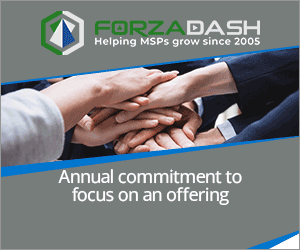Personalized MSP email campaigns are a powerful marketing tool to connect with your MSP audience on a deeper level and increase engagement and conversions. By tailoring your MSP email content to the individual recipient’s preferences, behaviors, and needs, you can significantly improve the effectiveness of your campaigns. Here are five tips for creating effective personalized email campaigns:
1. Segmentation is Key: Segmentation is one of the most critical aspects of personalized MSP email campaigns. Instead of sending the same generic email to your entire contact list, divide your audience into smaller segments based on specific criteria such as demographics, past purchase behavior, location, or engagement level. By segmenting your audience, you can deliver more relevant and targeted content that resonates with each group’s unique interests and needs.
For example, segmenting your email list based on past purchase behavior allows you to send tailored recommendations, upsell or cross-sell offers, and exclusive loyalty rewards, increasing the chances of driving repeat purchases.
2. Use Dynamic Content: Dynamic content allows you to create one email template with interchangeable elements that change based on the recipient’s information. This means you can customize elements such as product recommendations, images, and calls to action depending on the recipient’s past interactions with your website or email engagement.
For instance, if an MSP subscriber has shown interest in a particular product category, you can use dynamic content to display related products in your email, increasing their likelihood of purchasing.
3. Personalize Subject Lines and Preheaders: Your email’s subject line and preheader are critical components that determine whether the recipient opens the email. Use personalization in the subject line and preheader to catch the recipient\’s attention and encourage them to open the email.
Including the MSP recipient’s name in the subject line is a simple yet effective way to add a personal touch. Additionally, you can use dynamic content in the preheader to summarize the email’s content and make it more relevant to each recipient.
4. Behavior-Triggered Automation: Set up email automation to deliver relevant messages based on the recipient’s actions or inactions. For instance, if a subscriber abandons their shopping cart, you can automatically send a reminder email with the abandoned items, enticing them to complete the purchase. Similarly, you can send a personalized welcome series to new subscribers, introducing your brand and offering them valuable content based on their interests.
Behavior-triggered emails are highly effective because they are timely and directly related to the recipient’s actions, increasing the chances of driving conversions.
5. Personalize Beyond First Names: While using the recipient’s first name in the email is a great start, aim beyond simple personalization. Consider incorporating other relevant data points, such as past purchase history, location-based offers, or personalized product recommendations based on browsing behavior.
For example, a clothing retailer could use browsing behavior data to recommend similar items that match the recipient’s style preferences, showcasing a genuine understanding of their taste.
Personalized email campaigns are essential to modern marketing strategies. By segmenting your audience, using dynamic content, personalizing subject lines and preheaders, implementing behavior-triggered automation, and going beyond simple first-name personalization, you can create highly targeted and effective email campaigns that drive engagement, foster customer loyalty, and boost conversions. Personalization shows your audience that you value their individuality, strengthening connections and positively impacting your bottom line. Remember to regularly analyze your personalized email campaigns’ performance, gather audience feedback, and iterate to improve your email marketing strategy continually.

